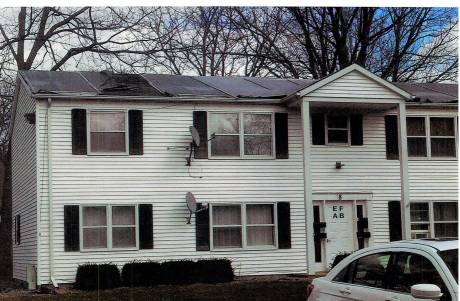Press release:
The U.S. Department of Agriculture announced several efforts today to expand nutrition assistance to hard-hit families across the country due to the coronavirus pandemic.
In support of President Biden’s call to action on hunger and with authorities provided by Congress, USDA is increasing the Pandemic-EBT benefit by approximately 15 percent, providing more money for low-income families and millions of children missing meals due to school closures.
Separately, in response to this national emergency, USDA is looking at ways to increase Supplemental Nutritional Assistance Program (SNAP) benefits to all participants, especially lowest-income households and those struggling to afford a healthy diet for their families.
As a part of the end of year COVID-19 relief package, Congress bolstered food assistance programs, including boosting monthly SNAP benefits by 15 percent and provided new funding for food banks and school and childcare meals.
USDA is committed to implementing these changes, but the measures alone will not solve the food hardship so many Americans are experiencing. Today, some 29 million adults and as many as 12 million children live in households struggling to afford food. More than 1 in 5 Black and Latino adults and many more children report food insecurity. These numbers continue to worsen each month.
USDA is committed to working with states and supporting governors, school districts, food banks and other key partners to deploy food assistance to struggling families, children, seniors and people with disabilities in the months ahead. The efforts announced today are detailed below.
P-EBT Benefit Increase
Upon taking office, the Biden administration took immediate action to deploy the emergency resources and new flexibilities Congress has provided. Established under Families First Coronavirus Response Act passed by Congress in March, the Pandemic Electronic Benefits Transfer (P-EBT) connects low-income families with kids with food dollars equivalent to the value of the meals missed due to COVID-related school and childcare closures.
To date, the program has capped P-EBT benefit amounts at $5.86 per child per school day and many households have had trouble claiming benefits. USDA will increase the current daily benefit amount by approximately 15 percent to tackle the serious problem of child food insecurity during this school year when need is greatest.
“As soon as the President took office, he called for immediate action on the hunger crisis gripping vulnerable families and children," said Stacy Dean, Deputy Under Secretary for Food, Nutrition, and Consumer Services.
"The announcement today provides more food dollars directly to food insecure kids living in low-income households who are missing critical meals due to school closures."
SNAP Emergency Allotments to States
Separately, USDA will begin working with the Department of Justice (DOJ) to review its authority to allow states to provide extra SNAP benefits through Emergency Allotments to the lowest-income households.
Last spring, Congress passed emergency increases to SNAP benefits to help address food insecurity during the pandemic. But those benefit increases have not been made available to the lowest-income households who make up 37 percent of SNAP households. Increasing SNAP benefits will not only help families most in need, but it is also a critical and effective form of economic stimulus.
A recent USDA study found that in a slow economy “$1 billion in new SNAP benefits would lead to an increase of $1.54 billion in Gross Domestic Product (GDP)—54 above and beyond the new benefits.”
Moreover, SNAP benefits reduced the poverty rate by nearly 8 percent in 2009 and had a significant effect on reducing child poverty.
Revising the Thrifty Food Plan Per 2018 Farm Bill
Finally, some 43 million Americans count on SNAP to help put food on the table. Currently, however, USDA's Thrifty Food Plan, the basis for determining SNAP benefits, is out of date with the economic realities most struggling households face when trying to buy and prepare healthy food. As a result, the benefits may fall short of what a healthy, adequate diet costs for many households today, especially in high cost of living areas.
Therefore, as directed by the 2018 Farm Bill, USDA will begin the process of revising the Thrifty Food Plan to better reflect the cost of a healthy basic diet today. USDA believes federal nutrition programs and benefits should support a basic healthy diet.
Call for More Congressional Action
While these actions will help address food insecurity for tens of millions of households nationwide, more is needed to solve the hunger crisis in America. As part of his American Rescue Plan proposal, President Biden is calling on Congress to:
- Extend the 15 percent SNAP benefit increase;
- Invest another $3 billion through the Special Supplemental Nutrition Program for Women, Infants, and Children (WIC) to help vulnerable mothers and kids get the food they need;
- Look for creative ways to support restaurants as a critical link in the food supply chain to help feed families in need;
- Provide U.S. Territories with $1 billion in additional nutrition assistance funding.


